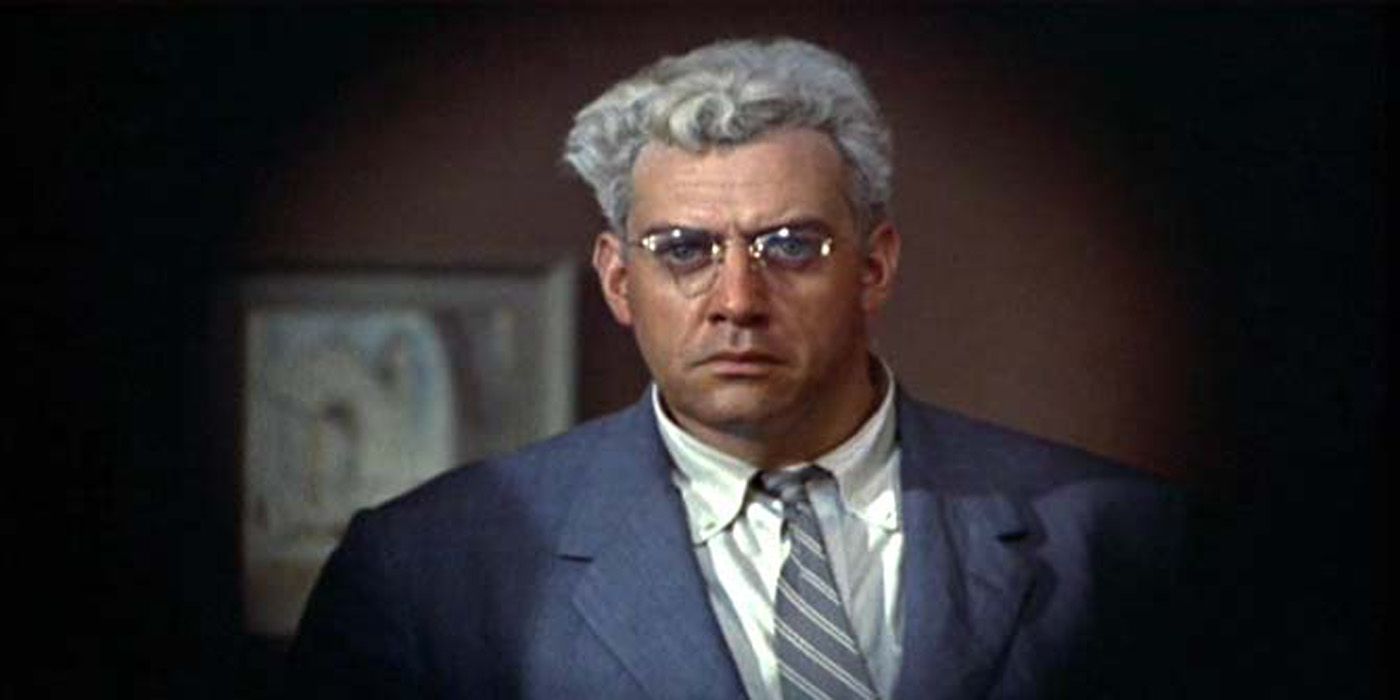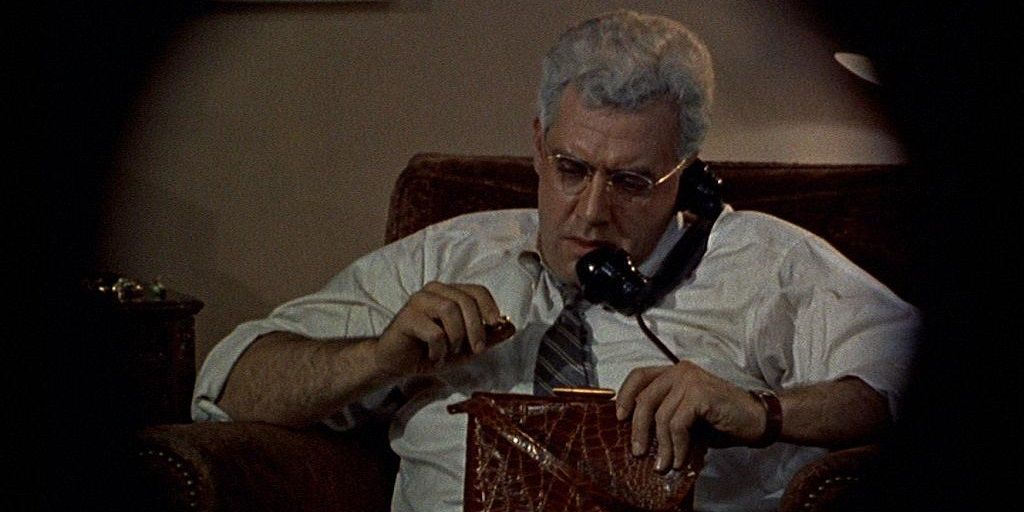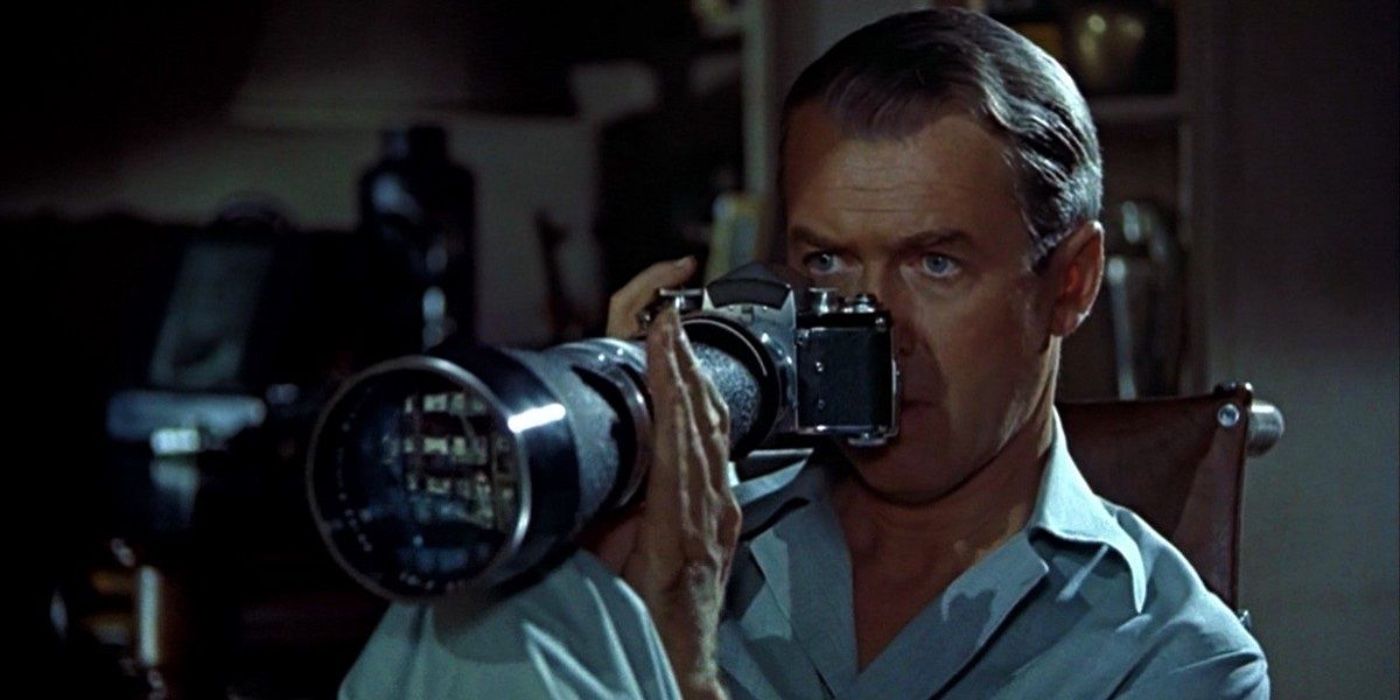Alfred Hitchcock is an acclaimed director known for making iconic thrillers, but these five minutes of film are the most suspenseful in Hitchcock’s 54-year movie career. Alfred Hitchcock is remembered not only for the quality of his films, but the quantity as well, with him pumping out classics on an almost yearly basis. Because of this, there is all kinds of debate surrounding which of Hitchcock’s movies are actually his best. When it comes to suspense, however, there is a clear answer, as a scene from one of his most popular movies contains five of the most tense minutes ever put to film.
Alfred Hitchcock is one of the most recognizable filmmakers of all time, with the director getting his start with the 1922 film Number 13 and continuing to make movies until 1976’s Family Plot. Although Hitchcock sadly died in 1980, his filmography is often considered to be one of the best in film history. The amount of classics Hitchcock directed is rivaled by almost no other, with him being the man behind films like Psycho, North by Northwest, Vertigo, Dial M for Murder, and tons more. Hitchcock dabbled in a variety of genres, but he was most well-known for making thrillers, with these five minutes being the pinnacle of Hitchcockian suspense.
Jeff Being Spotted In Rear Window Is The Most Suspenseful Scene In Alfred Hitchcock’s Career

Although Psycho and Dial M for Murder are tense, the most suspenseful scene in Alfred Hitchcock’s career can be found in the 1954 movie Rear Window. In the film, L.B. “Jeff” Jeffries is stuck in a wheelchair in his apartment after breaking his leg, causing him to spend his time viewing the courtyard that can be seen out of his rear window. While doing this, Jeff becomes convinced that his neighbor Lars Thorwald has actually killed his wife and is attempting to hide the evidence. One night while viewing a confrontation between Lisa and Thorwald, Lisa signals to Jeff, causing Thorwald to instantly spot Jeff from across the courtyard.
Throughout Rear Window, Jeff is a fairly passive protagonist due to him being stuck in his apartment during the course of the film. Although there is always a sense of danger, Jeff views things from a distance, meaning that the audience is never worried that Jeff could actually get hurt. However, things take a turn the instant that Thorwald spots Jeff, with Jeff and the audience knowing that things are about to get bad. Jeff knows that Thorwald understands what is happening at this point and that Thorwald may be coming after him. After all, Jeff believes that Thorwald is a murderer, and Jeff just might be his next victim.
Thorwald Looking Directly Into The Camera Works In A Terrifying Way

While there were plenty of ways to highlight that Thorwald spotted Jeff, Alfred Hitchcock visualized this moment in an interesting way. As has happened throughout the film, Rear Window uses a POV shot of Jeff’s camera, which he has been using as a telescope. While in a close-up of Thorwald, he turns and looks directly into the camera. This makes the scene incredibly impactful, as in the universe of Rear Window he is looking at Jeff, but in the real world, he is looking directly at the viewer. Putting audience members in the shoes of Jeff in this way makes the scene all the more terrifying.
Rear Window Works Because The Audience Feels As Helpless As Jeff

The story structure of Rear Window was a risky one, with it breaking some of the rules of storytelling, but it paid off masterfully. Passive protagonists tend to be something that is avoided in storytelling, as it has the potential to make the main character one of the least interesting parts of the story. However, by making Jeff unable to leave his apartment, the audience feels as helpless as Jeff. Jeff is simply an onlooker to the crimes he sees outside of his rear window, and much like the audience, he is attempting to piece everything together.
Due to Jeff being in a wheelchair, he probably couldn’t do much if he were attacked. Because of this, the threat of Thorwald is all the more terrifying. By having the audience see Jeff’s perspective of the crimes, viewers feel like they are in Jeff’s shoes. Because of this, when Jeff is in danger, the audience gets the sense that they are in danger as well. Due to this method of framing Rear Window‘s story, something that could be seen as mundane becomes incredibly tense, with these five minutes of film being the most suspenseful in Alfred Hitchcock’s career.




